
Xenophora, commonly called carrier shells, is a genus of medium-sized to large sea snails, marine gastropod mollusks in the family Xenophoridae, the carrier snails or carrier shells. The genus Xenophora is the type genus of the family Xenophoridae.

Cecilioides is a genus of very small, air-breathing land snails, terrestrial pulmonate gastropod mollusks in the family Ferussaciidae.

Spisula is a genus of medium-sized to large marine bivalve mollusks or clams in the subfamily Mactrinae of the family Mactridae, commonly known as surf clams or trough shells.

Neverita is a genus of medium-sized to large sea snails, marine gastropod molluscs in the subfamily Polinicinae of the family Naticidae, the moon snails

Petricola is a genus of saltwater clams, marine bivalve molluscs in the subfamily Petricolinae of the family Veneridae, the Venus clams.
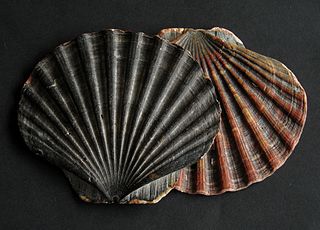
Pecten is a genus of large scallops or saltwater clams, marine bivalve molluscs in the family Pectinidae, the scallops. This is the type genus of the family.

Tudorella is a genus of land snails, terrestrial gastropod mollusks in the family Pomatiidae.

Ptychobela suturalis is a species of sea snail, a marine gastropod mollusk in the family Pseudomelatomidae, the turrids and allies.
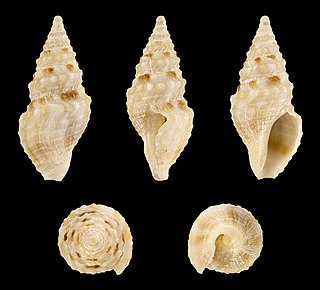
Epideira quoyi is a species of sea snail, a marine gastropod mollusk in the family Horaiclavidae.
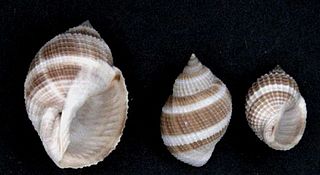
Merica elegans, common name the elegant nutmeg, is a species of sea snail, a marine gastropod mollusk in the family Cancellariidae, the nutmeg snails.

Euthria cornea, common name : the spindle euthria, is a species of sea snail, a marine gastropod mollusk in the family Buccinidae, the true whelks.

Naytia glabrata is a species of sea snail, a marine gastropod mollusc in the family Nassariidae, the Nassa mud snails or dog whelks.

Onustus is a genus of large sea snails, marine gastropod mollusks in the family Xenophoridae, the carrier shells.
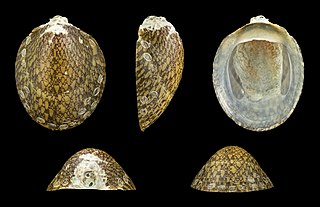
Septaria porcellana is a species of freshwater snail, a gastropod mollusc in the family Neritidae.

Neripteron auriculatum is a species of brackish water and freshwater snail, an aquatic gastropod mollusk in the family Neritidae, the nerites.
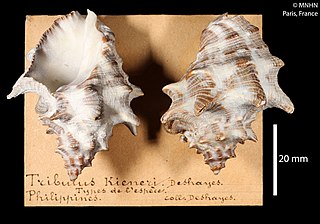
Reishia bitubercularis, common names bituberculate rock shell, bituberculate rock snail, chestnut rock shell, is a species of sea snail, a marine gastropod mollusk, in the family Muricidae, the murex snails or rock snails.

Pinna muricata is a species of bivalves belonging to the family Pinnidae.

Potomida littoralis is a species of bivalve belonging to the family Unionidae.

Pandora is a genus of small saltwater clams, marine bivalves in the family Pandoridae.
Venerupis is a genus of marine bivalve molluscs in the subfamily Petricolinae of the family Veneridae commonly known as carpet shells.


















